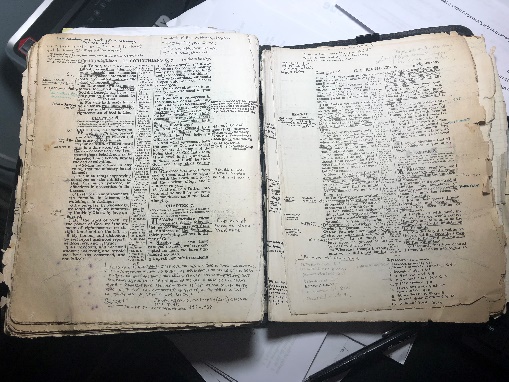

He then took the existing inferior manuscripts of his day, consulted original Hebrew and Greek texts and produced a new Latin version of the Bible called the Vulgate. In 383 he wrote to Pope Damasus describing the mistakes, inaccurate translations and blundering alterations found in the manuscripts of just the New Testament alone and sought approval to produce a better translation of the Bible. How much biblical material has been lost, we can only guess.Ī towering figure in the history of biblical transmission is St.

Catherine’s Monastery on the Sinai Peninsula by German scholar Constantin von Tischendorf in 1844 - he actually rescued its pages from a pile of trash waiting to be burned). However, the two oldest surviving complete (more or less) Bibles date from approximately the mid-to late-fourth century and are known today as the Codex Vaticanus (housed in the Vatican library) and the Codex Sinaiticus (found at St. No one knows exactly when the Old and New Testaments were combined into a single volume. He mentioned them in an Easter letter to his parishioners in 367. The first church leader to include all 27 books of the present New King James version of The New Testament canon was Athanasius (296–373), bishop of Alexandria. The New Testament canon (collection of authoritative books) developed gradually. It contains a few verses written in uncial script (Greek rounded capital letters) and shows that John’s Gospel was circulating in Egypt no later than A.D. The earliest artifactual evidence for the existence of a written gospel is a papyrus fragment of John, discovered in 1934 and now housed in the Rylands Library in Manchester, England.

The three synoptic Gospels, followed by John’s Gospel, came afterward. In his book Journey From Texts to Translations, Paul Wegner explains that it "was crucial for the early church to have access to the very words of Christ and the apostles because this is the foundation upon which the church was built." Thus, teachings and stories of Jesus first circulated orally, with the written letters or epistles of the Apostle Paul appearing fairly early, some by at least A.D. The New Testament went through a similar process. It is believed the Old Testament reached its current form sometime around the late first-century A.D. Over 700 years later, Ezra the scribe returned to Jerusalem from the Babylonian captivity and it is thought performed the demanding task of collecting, sorting and editing the extant biblical books and records into one collection. Moses, the ancient lawgiver and deliverer of Israel, is credited with authorship of the Pentateuch, but he undoubtedly took existing records collated, edited and abridged them and wove them together in a narrative. Stories began to be set down in writing and were combined with laws, prophecies and poetry in order to describe God’s involvement in human history. Each successive writer-editor added to previous records. These early portions of Genesis provide us with a pattern for how the rest of the Hebrew Bible or Christian Old Testament was formed. The earliest sections of the first book of the Bible, Genesis, were composed of genealogical or family history records. According to one authority, the Bible “has had a greater influence on the world for good than any other book ever published.” Many individuals through the ages gave everything they had - health, wealth, reputation and even their very lives - for the single-minded purpose of making God’s word available to all who could read or be read to. The history of the Christian Bible (Old and New Testaments) is a remarkable story filled with high drama, inspiration, intrigue, intellectual brilliance and self-sacrifice. Skinner- Executive Director of the Neal A Maxwell Institute of Religious Scholarship.


 0 kommentar(er)
0 kommentar(er)
